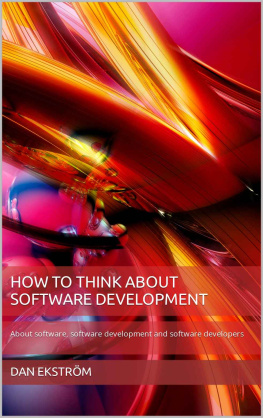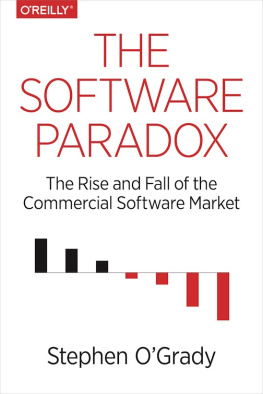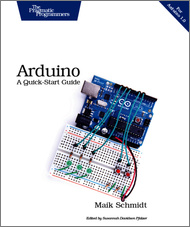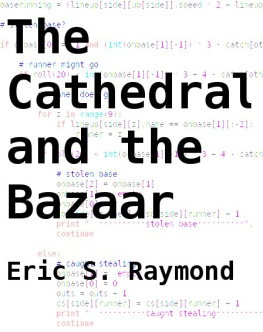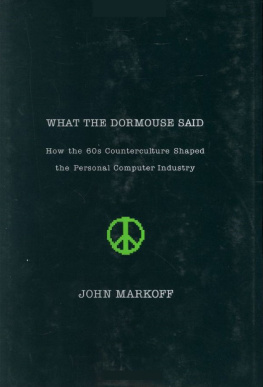Software People
An Insiders Look at the Personal Computer Software Industry
To Gary and Cathy Carlston, without whom Brderbund would never have existed.
I want to thank John Brockman, who conceived of this book, and Frank Schwartz, who believed in the project and gave me the confidence to tackle the job. Id also like to thank Howard Rheingold, who helped me write much of this book and whose knowledge of his craft made the rest as intelligible as it is. Without his gentle prodding, I never would have succeeded in committing anything to paper. Id like to extend my appreciation to my assistant, Janetta Shanks, whose humor and organizational skills helped bring the book together. Many software industry people contributed their time and let me pick their brains for the book: Paul Lutus, Ken Williams, Ed Auer, Margot Tommervik, Bill Budge, Messrs. Son, Hoshi, Kudo, and Gunji, and Bill Baker. Thank you all. My gratitude extends to all the Brderbunders who kept our company on such a steady course that I could spend weekends working on the book: Gary Carlston and Cathy Carlston, Ed Bernstein, Bill McDonagh, Stu Berman, Debbie Hippie, Jane Risser, Jon Loveless, Brian Eheler, Brian Lee, Al Sonntag, Allan Kausch, and all the others. The three outside groups whom we most credit for our early success are Dave Wagman and Bob Leff of Softsel, Al and Margot Tommervik of Softalk magazine, and Minoru Nakazawa of Star Craft. Finally, I thank my wife, Mary, for her patience and support on this project during our first year of marriage.
When my brother and I started Brderbund Software in 1980, we had no idea that it would become one of the largest home computer software companies in the world. In fact, we originally entered the software business by accident. We had no business plan, no scheme to make our fortunes. We were just trying to come up with a way to pay our next months rent.
In most ways, we were unlikely candidates for the roles we assumed. Neither of us had any business experience to speak of, neither of us knew very much about computers, and neither of us lived anywhere near those centers of innovation where so many high-technology firms were springing up. Before we started our company, I was a lawyer, practicing my trade in rural Maine. My brother Gary had just returned from Sweden, where he had spent five years working as a coach for a womens basketball team. He was now living in Oregon, where, after a stint as field director for the March of Dimes, he became involved in an importing business that proved to be unsuccessful.
What we had was computer fevera malady we shared with all the other entrepreneurs who were forming similar companies. Of the two of us, I was the one who was more heavily stricken. Programming can be an addictionthose who get drawn into it often forget jobs, family, and friends in their absorption with these fascinating machines. My own addiction began in 1978 when I took the fateful step of entering a Radio Shack store in Waterville, Maine, in order to take a closer look at the computer that was displayed in the window. I ended up walking out with a TRS-80 Model 1 tucked underneath my arm. My life has not been the same since.
I wasnt a complete stranger to computers, however. In the mid-1960s, as a teenager, I had taken a summer course on computers at Northwestern University. In the following years I found a few programming jobs, first at the University of Iowa in Iowa City (where my family lived when I was in high school) and later at the Aiken Computation Lab of Harvard University, where I was an undergraduate. My fellow programming fanatics and I used to jam chewing gum into the locks on the doors of the chemistry building just so we could sneak in after midnight and play with the big IBM 1620. But college was an exciting place for me, and there were lots of other distractions, so my interest in computers waned. By the time I saw that computer in the Radio Shack window ten years later, I had forgotten everything I once knew about computersexcept how much fun they were.
When I obtained my TRS-80, I was a lawyer in Newport, Maine, a small town that had fewer than 5000 residents and was close to my parents summer place. Having grown tired of practicing corporate law in Chicago, I had retreated to Maine in 1977, opened a law practice with a friend, and divided my time between lawyering, building houses, and skiing. All of this had been fun at first, but rural life was starting to bore me, and I began looking for a distraction.
I bought the computer because I thought it would be fun to use. I also had a notion that I could computerize a lot of the routine work around my law office. At that time I knew of a lawyer in Northern Maine who traveled around the area in a Winnebago camper that was fully equipped as an office and that included a microcomputer system; he was able to crank out wills, trusts, and deeds in a fraction of the time normally required for such work and at a fraction of the cost that most lawyers charged. Our law office needed to be able to compete with him, I thought. We needed to computerize.
I know now that those thoughts were purely rationalizations. As I started to play with the computer, all my old fascination with the technology returned. These tiny machines could do almost as much as the huge, expensive models I had first encountered! My interest in the law business declined, and I spent more and more of my spare time learning the tricks of programming. I did eventually write the legal software for my firm, but we never really used it. At the same time I also wrote a game. Although I saw it as a weekend amusement, that game was actually the beginning of the end of my law career.
The game was a simulationa science fiction fantasy called Galactic Empire. I wrote the program in a couple of weekends for my personal enjoyment. And when I say a couple of weekends, I mean a programming marathon that started Friday afternoon and wrapped around to Monday morning, relieved only by occasional catnaps and snacks. When the game was finished, it turned out to be a lot of fun to play, and so I started adding more and more features to it, until I finally ran out of space in the computers memory. Even these powerful new microcomputers can hold only so much in their electronic memories before they cry uncle and refuse to run a program.
I then began to look for ways to make my programming code more compact so that I could add just one more feature. Like minuets and mathematical equations, programs should be elegant as well as formally correct, and it takes a very skilled, experienced programmer to tinker with a program without destroying its elegance. My own program structure ended up looking like a tangled ball of spaghetti, but only another programmer would have noticed how ungainly it was. For those who were just playing the game, the programming code was invisible.
Imagine youre playing the game. What you see on the screen is the cockpit of a spaceship. Youre at the helm, where you see, in the upper left corner of the screen, a window that looks out into interstellar space. If a planet comes into view, your onboard computer identifies it for you. Below the viewport you see a computer screen (after all, spaceships are bound to have computers on board, so I included a computer within the computer), and off to the right is your fleet detail that tells you at a glance how many fighters, transports, and scout ships you have at your disposal. The objective of the game is to conquer a cluster of twenty planets that had unlikely names like Javiny and Ootsi. To accomplish your goal within the 1000 years that you are allotted (people live longer in the future) requires considerable logistic sophistication.



